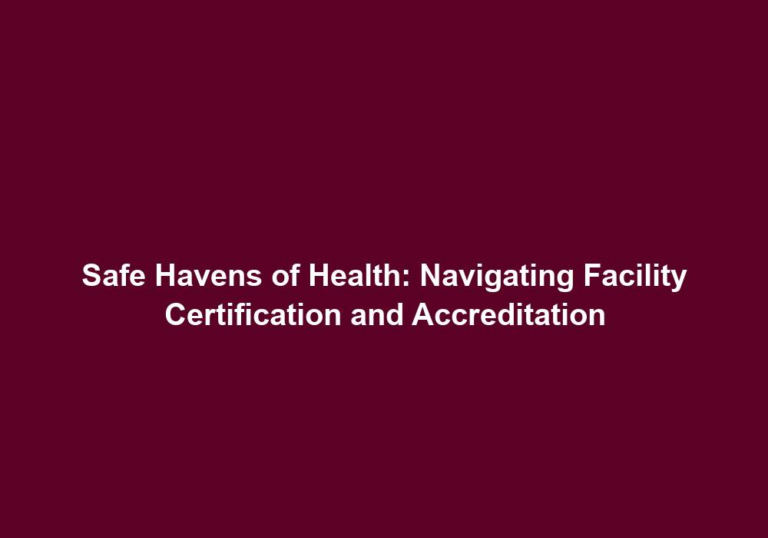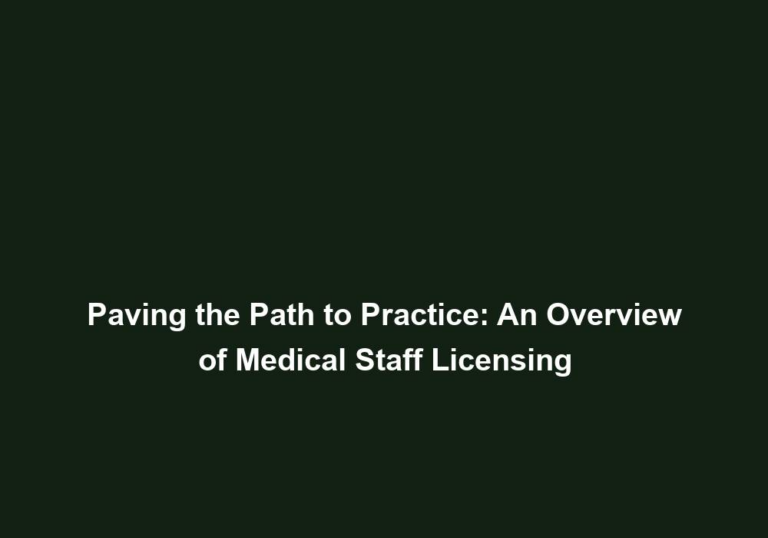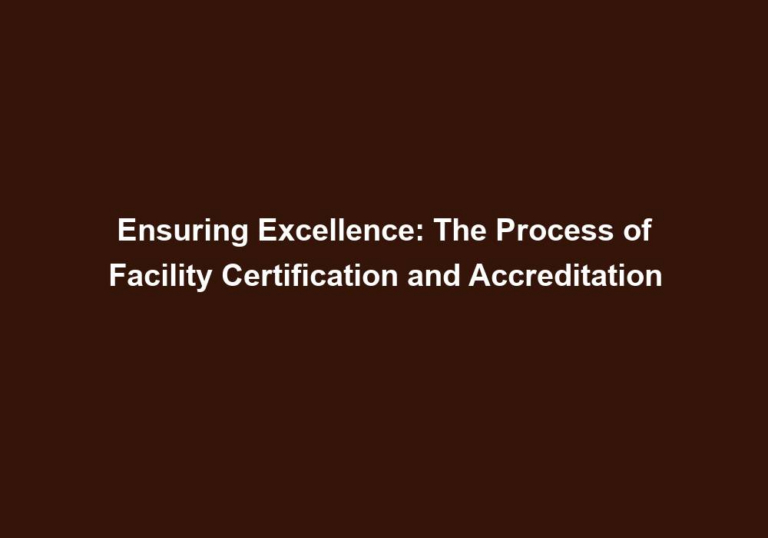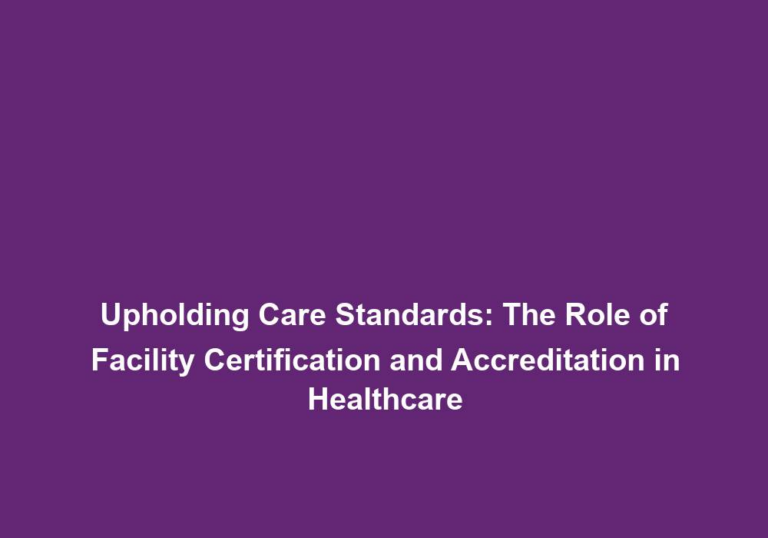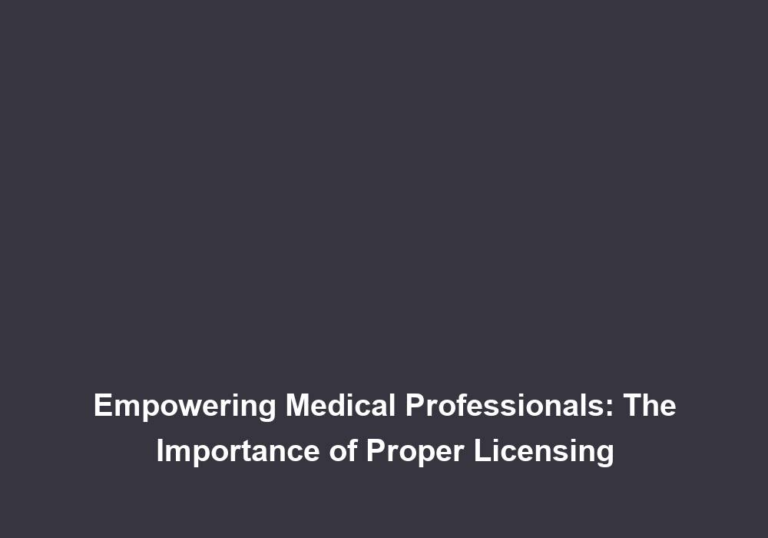From Medical School to Hospital Floors: The Journey of Medical Staff Licensing
The journey from medical school to hospital floors involves a comprehensive process of acquiring the necessary licenses and certifications. This article aims to provide an in-depth understanding of the steps and requirements involved in obtaining medical staff licensing, paving the way for aspiring healthcare professionals to embark on their careers confidently.
1. Understanding the Importance of Medical Staff Licensing
Medical staff licensing is a critical aspect of the healthcare industry, ensuring that healthcare professionals meet the necessary standards and possess the required skills and knowledge to provide quality patient care. It serves as a regulatory mechanism to protect patients and uphold the integrity of the healthcare system. By obtaining a medical staff license, healthcare professionals are held accountable for their actions and are expected to adhere to ethical and professional standards.
To obtain a medical staff license, healthcare professionals must demonstrate their competence in their respective fields. This includes acquiring a comprehensive understanding of the medical field, staying updated with the latest advancements, and continuously improving their skills. By undergoing the licensing process, healthcare professionals are equipped with the necessary qualifications and credentials to deliver safe and effective patient care.
2. Obtaining a Medical Degree
The journey towards medical staff licensing begins with the completion of a medical degree from an accredited medical school. This is a crucial step that provides aspiring healthcare professionals with a solid foundation in medical knowledge and skills. Medical school typically involves several years of rigorous study, practical training, and clinical rotations, allowing students to gain firsthand experience in various medical specialties.
During their medical education, students are exposed to a wide range of subjects, including anatomy, physiology, pathology, pharmacology, and medical ethics. They learn how to diagnose and treat various medical conditions, develop critical thinking skills, and acquire the ability to make sound medical decisions. The curriculum is designed to prepare students for the challenges they will face as healthcare professionals.
3. Completing Residency Training
Following the completion of medical school, aspiring healthcare professionals must undergo residency training in their chosen specialty. Residency programs provide an opportunity for healthcare professionals to further refine their clinical skills and gain practical experience under the guidance of experienced physicians.
Residency programs vary in duration depending on the specialty, typically lasting from three to seven years. During this time, residents work long hours, often in high-pressure environments, to care for patients and manage complex medical cases. They learn to collaborate with interdisciplinary teams, enhance their communication skills, and develop a deep understanding of their chosen specialty.
Residency training is a crucial step towards obtaining medical staff licensing as it allows healthcare professionals to apply their theoretical knowledge in real-world clinical settings. It provides them with the opportunity to sharpen their diagnostic and treatment skills, develop professionalism, and cultivate a sense of responsibility towards patient care.
4. Preparing for Licensing Examinations
Once residency training is complete, healthcare professionals must prepare for and pass the required licensing examinations. These examinations evaluate their medical knowledge, clinical skills, and ability to make sound medical decisions. The most common licensing examinations include:
-
United States Medical Licensing Examination (USMLE): The USMLE is a three-step examination series that assesses the medical knowledge and skills of physicians seeking licensure in the United States. It covers a wide range of topics, including basic sciences, clinical medicine, and patient management.
-
Comprehensive Osteopathic Medical Licensing Examination (COMLEX-USA): This examination is specific to osteopathic physicians and assesses their medical knowledge and clinical skills. It evaluates their ability to diagnose and treat patients using osteopathic principles and practices.
-
Medical Council of Canada Qualifying Examination (MCCQE): The MCCQE is a two-part examination series for Canadian medical graduates. It assesses their medical knowledge, clinical skills, and ability to provide safe and effective patient care.
Preparing for these licensing examinations requires extensive studying and review of medical concepts and principles. Healthcare professionals often utilize study materials, practice questions, and review courses to enhance their chances of success. It is essential to dedicate sufficient time and effort to adequately prepare for these examinations, as they play a crucial role in obtaining medical staff licensing.
5. Applying for Medical Licensure
Upon successfully passing the licensing examinations, healthcare professionals can apply for medical licensure in the jurisdiction where they wish to practice. The specific requirements and application process vary depending on the country or state. Generally, the application involves submitting the necessary documentation, such as educational transcripts, examination scores, letters of recommendation, and a completed application form.
It is important for healthcare professionals to carefully review the application requirements and ensure that all necessary documents are submitted in a timely manner. Any discrepancies or missing information can delay the licensing process. Additionally, some jurisdictions may require applicants to undergo a personal interview or provide additional documentation to assess their suitability for medical licensure.
6. Completing Background Checks and Credentialing
As part of the licensing process, healthcare professionals are often required to undergo background checks and credentialing. This step is crucial for ensuring patient safety and maintaining the integrity of the healthcare system. Background checks involve verifying the authenticity of the healthcare professional’s education, training, and work experience. This helps to prevent the inclusion of individuals with fraudulent credentials in the healthcare workforce.
Credentialing involves verifying the qualifications and credentials of healthcare professionals, including their educational degrees, professional certifications, and licenses. This process ensures that healthcare professionals are qualified to practice in their chosen specialties and have met the necessary standards of competency.
Background checks and credentialing also involve checking for any disciplinary actions or malpractice claims against the healthcare professional. This helps to identify any past misconduct or negligence and ensures that only qualified and ethical individuals are granted medical staff licensing.
7. Obtaining Specialty Certifications
In addition to medical licensure, healthcare professionals may choose to pursue specialty certifications to further enhance their expertise and professional standing. Specialty certifications are typically offered by recognized medical boards or specialty organizations and require additional examinations and documentation specific to the chosen specialty.
Specialty certifications validate the practitioner’s advanced knowledge and skills in their respective field. They demonstrate a commitment to continuous learning and professional development. By obtaining specialty certifications, healthcare professionals can differentiate themselves in the competitive healthcare landscape and gain recognition for their specialized knowledge and skills.
Specialty certifications are available in various medical specialties, such as cardiology, gastroenterology, obstetrics and gynecology, and pediatrics. Each certification has its own specific requirements, including a combination of written examinations, practical assessments, and documented experience in the specialty.
8. Continuing Education and Maintenance of Licensure
Once medical staff licensing is obtained, healthcare professionals must engage in ongoing continuing education to stay updated with the latest advancements in medicine and maintain their licensure. Continuing education activities are essential for professional growth, ensuring that healthcare professionals remain competent and provide high-quality patient care.
Continuing education opportunities for healthcare professionals include attending conferences, workshops, and seminars, completing online courses, participating in research projects, and obtaining additional certifications. These activities help healthcare professionals stay abreast of new treatment modalities, advancements in medical technology, and changes in healthcare policies and regulations.
Many jurisdictions require healthcare professionals to fulfill a certain number of continuing education credits within specific timeframes to renew their licenses. This ensures that healthcare professionals stay current in their knowledge and skills, promoting the delivery of safe and effective patient care.
Conclusion
The journey from medical school to hospital floors is a rigorous process that involves obtaining the necessary licenses and certifications. Medical staff licensing ensures that healthcare professionals meet the required standards and possess the skills and knowledge needed to provide quality patient care. By understanding the steps and requirements involved, aspiring healthcare professionals can navigate this journey with confidence and embark on a rewarding career in medicine.


